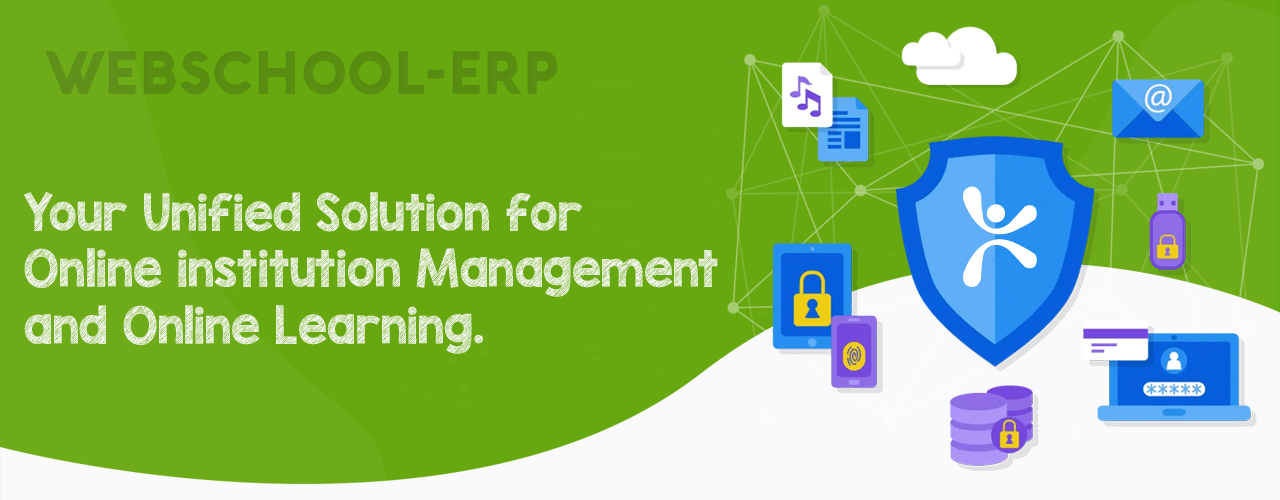
How School Management Software Helps Educational Institutions to Build a Better Environment.
November 22, 2020
School Management System: Everything to Know in 2021!
January 24, 2021The global pandemic has forced educational institutions to shut down and switch to e-learning, where lectures are conducted remotely through virtual platforms.
In May 2020, UNESCO recorded school closures in 130 countries, with 56.6% enrolled learners bearing the brunt of COVID-19. Because of this, schools have witnessed significant growth in their understanding of technology’s crucial role in supplying virtual feedback for students and connecting the demands of instructors, pupils, and parents to monitor and relay the knowledge, skills, comprehension, and limitations of each learner.
Even before the pandemic, digital classrooms have become second nature with the evolution of education. There are millions of students taking online courses on popular websites. The latest figures from the National Center for Education show over 6 million students enrolled in remote education classes at postsecondary establishments with degree programs in the US.
One of the best school management platforms that can make your progress monitoring strategies more efficient is Web School ERP. This software is designed to keep an eye on every learner’s day-to-day performance easily, so both parents and teachers can be up to date with the students’ progress in their lessons.
With platforms like this, it’s never been easier to supply efficient and effective feedback in the online classroom.
Combining our software and proven techniques, here’s how to monitor student progress online:
1. Make it simple and easy by onboarding helpful solutions
The monitoring and evaluation of learner progress and achievement shouldn’t have to be too complex. To make it easy, you can incorporate tools that can improve the way you keep track of your students’ day-to-day performance and progress.
Implementing new technology like enterprise resource planning software is fairly straightforward and convenient. ERP setup usually takes about an hour or two. The interface is easy to grasp even for educators and administrators who have no experience handling similar platforms.
Accuracy is also guaranteed by these systems, especially by different types of ERP software that are subject to a series of technical evaluations. These assessments are beneficial so that when a school onboards it, there will be no disruptions in their management and progress monitoring strategies.
2. Go mobile
Mobile devices have played a great part in last year’s sudden shift to distance learning. Students who do not have laptops or tablets have extensively relied on mobile to pursue e-learning.
In 2020, more than 2 billion mobile users accessed educational services via mobile phones, as tallied by the Mobile Industry SDG Impact Report.
Meanwhile, faculty and staff have used mobile phones in various education aspects, such as course planning. They’ve also used mobile as an effective learning tool by pairing various learning platforms with it to foster student participation.
Schools can take advantage of the growing power of mobile to provide efficient and effective feedback in the online classroom.
One way you can figure how to monitor student progress online is by updating your students’ progress and performance whenever it’s necessary, regardless of time or location. You can do this with a powerful ERP like Web School. We have a mobile app that’s linked to our product, making it possible to monitor progress and provide feedback on the go.
Our ERP’s well-designed features are formidable and easy to grasp. Besides being able to keep a close eye on your student’s performance, it can improve the way you conduct monitoring and evaluation of learner progress and achievement by generating reports and analytics, enforcing control in courses and taking in enrollment transactions, among others.
It’s an all-in-one solution that goes beyond giving virtual feedback for students, so it’s a worthy investment for your educational institution.
We’re available for Android and iOS gadgets, and we’re always open to help you with your progress monitoring strategies. Contact us and see what we can do for you.
3. Follow through your grading system
You can’t give virtual feedback for students without having a concrete grading system for their course. This evaluation system does not have to be in numbers. You can also assess each student according to your own metrics as long as they’re aligned with your establishment’s values.
For example, if you want to maintain a sense of normalcy amidst the crisis, you can continue to give out letter or number grades to your students. However, to be a little more considerate about the circumstances, you can set a period for tasks that were turned over late if they have valid reasons such as loss of internet access, inability to borrow a device or access technology, exposure to the virus, and other physical safety predicaments, just to name a few.

4. Keep virtual feedback for students balanced
In order to give the most efficient and effective feedback in the online classroom, you need to maintain a realistic balance according to the task’s progress and demands.
One of the best progress monitoring strategies you can practice is avoiding overcommunication, which can overwhelm your student and become a roadblock for their advancement.
Keep your remarks straightforward and easy to follow. Place them in the right areas in the assignment and keep an eye out for changes in your learners’ understanding.
To make virtual feedback for students more visible, highlight them and pinpoint references for development and correction. You can use colored font or a different font style to make these remarks stand out so they’re easier to remember.
5. Experiment on peer feedback
Rather than grading each assignment yourself, hand out a criteria and let students evaluate one another’s assignments. Monash University claims peer assessment is crucial for learners to help determine areas for improvement, to provide multiple viewpoints and to help pupils work through contradicting appraisals.
When students are required to provide constructive criticism to their peers, they’re responsible for evaluating someone else’s work. They’re taught sensitivity when doing so because in order to give efficient and effective feedback in the online classroom, they must think about how they’d feel if they were getting the assessment themselves.
Peer evaluation is a time-saving way to learn how to monitor learner performance and progress virtually. It also fosters peer learning and instills impartiality among pupils.
Couple this with the influence of your school management system and you’ve got efficient and effective feedback in the online classroom that comes from not just you but also your students.
6. Recognize your students’ best work
When students accomplish various tasks, ask them to select the one that best represents what they’ve learned in your class. Make that assignment the basis of what they’ve already mastered and which areas still have room for improvement.
Progress monitoring strategies should also be selective, so as not to lose time over less important tasks included in your learning targets. Virtual courses are a lot of work, so simply check other assignments for completion and comparison.
7. Use information about students to your advantage
Some schools make the mistake of equating data gathering to effective progress monitoring. They accumulate plenty of information but fail to harness it to improve their teaching strategies.
In order to execute successful monitoring and evaluation of learner progress and achievement, educational institutions must make it mandatory to use and reflect on the data they’ve gathered about their students. Teachers must take on the responsibility of harnessing this information to steer future instruction methods for each student so that learning can be more individualized and hands-on.
Successful progress monitoring strategies
There are so many ways to execute the monitoring and evaluation of learner progress and achievement. We’ve barely covered all of them, but we hope that you find the tips we’ve mentioned useful and effective.
Competence as an educator is important in monitoring and evaluation of learner progress and achievement. It’s like shooting an arrow and finding out whether you’re close to the bull’s eye so you can improve your accuracy. Teachers must always be aware of how successful their instruction is and amidst changing times must master how to monitor student progress online.




